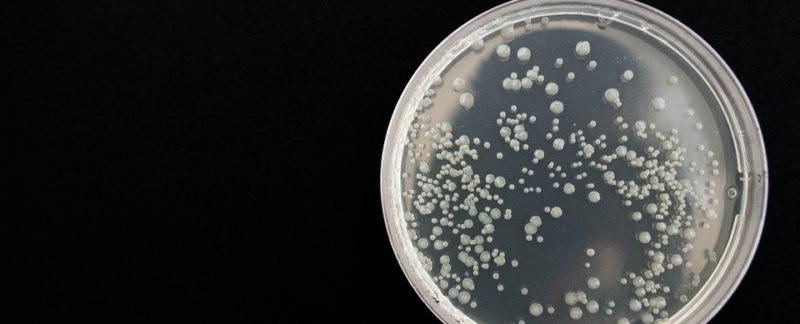Microbiome is a term that has been quite popular recently for those who are looking to enhance their health. The microbiome is a collection of microbes that live within and on the human body. Past research typically focused on individual species of bacteria but recent research has been focusing on the entirety of what compromises the human microbiome and how it relates to many of our basic life processes.
There are literally hundreds of species of bacteria that live and thrive in the human gut. Each of us has a unique microbiome depending on where we’ve lived, what we’ve eaten and drunk, and other environmental factors. The microbiome in our digestive tracts has been referred to as the “second brain” and recent research has been providing surprising links to our metabolism and other previously unknown connections to our health—even to our thought processes and emotions.
How do you know if you are eating properly when following a low-carb diet? The following are 5 keys to making sure your gut is happy and healthy:
Key #1: Don’t eat processed foods
Processed foods tend to be high in sugar. Sugar is avoided completely on a low-carb diet. But processed foods also have preservatives and chemicals. They are low in fiber and can be high in unhealthy fats as well as other carbohydrates.
Processed foods, as the name suggests, are processed to increase flavor as well as maintain shelf stability. This means they are specifically made to be addictive to humans and to be less attractive to microorganisms. This is why processed foods are stable much longer than fresh foods. If the food is less attractive to microorganisms out in the world chances are pretty good the microorganisms you have in your gut won’t want to eat them either. In fact, processed foods promote unhealthy gut bacteria to thrive killing off healthy gut microflora making you more susceptible to infections.
Key #2: Eat fiber rich foods
Contrary to popular belief, maintaining a low-carbohydrate lifestyle does include lots of fresh vegetables and some higher fiber berries as well as high fiber flax or chia seeds and nuts. All of these are easy to incorporate into a low-carb diet.
Adequate fiber helps to control appetite, balance blood sugar, and prevent disease. Fiber is not digested so our bodies do not utilize these calories. However, our gut microbes do utilize fiber.
There are two types of fiber: soluble and insoluble. Soluble fiber is broken down fully in the intestines and acts like a sponge to soak up and trap excess cholesterol, sugar, and toxins, which are then excreted. This type of fiber is found in some fruits (apples and citrus), grains (oats and barley), nuts (almonds), and seeds (flax, chia, and psyllium).
Insoluble fiber does not break down in the intestines and acts to sweep the colon clean. This type of fiber is found in the cell walls of plants and contains mostly cellulose, which is indigestible to humans. It can be found in whole grains and in small amounts in fruits and vegetables, including in coconuts.
Eat lots of vegetables, nuts, seeds and berries!
Key #3: Eat fats that are high in SCFs
SCF’s (short chain fatty acids) are produced by bacteria in your gut from foods high in fiber. There is some evidence that suggests that eating a diet higher in fat decreases the ability of gut bacteria to produce SCFs which are beneficial to our health.
Low-carb diets tend to be higher in fat (based on the percentage of total calories) and SCFs tend to decrease on a high fat diet so replacement is helpful. Though low-carb diets were initially misconstrued as diets where people lots of “bacon, eggs and steak”, low-carb diets have stepped into a healthier light as more research is being done and the benefits are being seen. A simple way to increase the SCFs in your diet is to use coconut oil when cooking which is very high in SFCs. Additionally using fats that are known to be anti-inflammatory can help. These include: avocados, olives and olive oil, salmon, nuts (almond, walnut, and cashews).
Key #4: Add in fermented foods
Eating probiotic fermented foods such as sauerkraut, kimchi, kombucha, yogurt, raw cheese, kefir, sour pickles or other sour pickled vegetable and miso. Probiotics are foods that contain live bacteria which help to promote healthy bacteria in the gut.
Prebiotics are foods or nutrients that the probiotics feed on. A low-carb lifestyle should include prebiotic foods as well as probiotic foods whenever possible.
Key #5: Vary your foods
Eating a low-carbohydrate diet can feel very limited. To help your microbiome to feel healthy and vibrant, include as much fresh food as possible – eat a variety of vegetables, nuts, seeds and proteins – changing them up often. Be sure to also eat protein at each meal. The key is to switch it up.
Two recipes that incorporate several of these healthy benefits are:
– Link to Coconut Granola
– Link to Spiced Pumpkin – Chocolate Swirl Bread Fantastic served with (link to) Coconut Cream Anglaise as a special dessert. Make this dessert even more special by reading about using essential oils in my blog post: Making Foods Healthier and More Enjoyable With Essential Oils
The ingredients in these recipes contain prebiotics such as fiber and healthy fats to help nourish your good life promoting microbiome otherwise known as probiotics. The good news is that each recipe contains different types of prebiotics so you get a nice variety. Yogurt is considered a probiotic as it contains live healthy bacteria. The sweeteners used in these recipes do not affect blood sugar and act as fiber in the body.
At the end of the day, eating a low-carb diet can be healthy, satisfying and delicious. It can even be SWEET!



